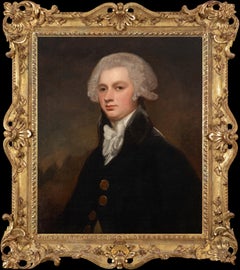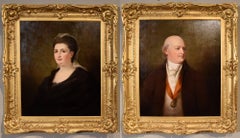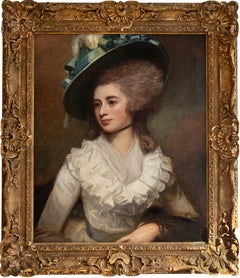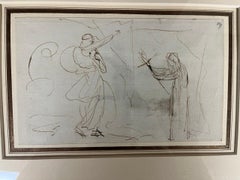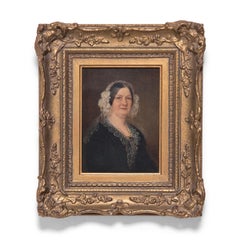George Romney Art
George Romney is best known as one of British society’s foremost portrait painters of the 18th century, rivaling other widely acknowledged portraitists such as Thomas Gainsborough and Joshua Reynolds.
Born in 1734 in Dalton-on-Furness, Romney was the son of a cabinetmaker. In 1755, he began his artistic career as an apprentice to portrait painter Christopher Steele before traveling to northern England to establish a painting studio in Kendal. Romney’s talent in portraiture proved fruitful. By 1762, he had made enough money to set up a studio in London, where he became renowned for an “ability to paint flattering images regardless of personality.”
During the 1760s, Romney had hoped to become a history painter but was unsuccessful. To refine and improve his technique, he traveled to Rome in 1773, where he spent two years studying the Old Masters, including Titian, Correggio and Raphael. While there, he was also influenced by the works of Swiss painter Henry Fuseli.
Upon his return to London, in 1775, and with his newly honed painting style, Romney became even more popular among the British aristocracy and nobility. Although his primary aspiration was to make a living as a historical painter, Romney was in demand as a portraitist. His favorite subjects were children and women, particularly his muse, Emma Hart — who later became Lady Hamilton and mistress of Admiral Lord Nelson. Romney painted several Romantic portraits and drew many sketches of Lady Hamilton, whom he considered to represent the ideal of feminine beauty.
In his later years, Romney produced several portraits and drawings of Shakespearean subjects for John Boydell’s Shakespeare Gallery in 1790.
Romney’s figurative works, portraits and prints are held in collections of numerous major museums and galleries, including the National Portrait Gallery in London, the National Gallery of Canada in Ottawa, the Metropolitan Museum of Art and the Frick Collection in New York. In 2002, an exhibition commemorating the bicentenary of Romney’s death was organized by the National Museums Liverpool in partnership with the National Portrait Gallery and the Huntington Library, Art Collections and Gardens in San Marino, California.
On 1stDibs, find a range of original George Romney drawings, paintings and prints.
1780s Old Masters George Romney Art
Oil
1780s Old Masters George Romney Art
Oil
1780s George Romney Art
Oil
1970s Old Masters George Romney Art
Oil, Canvas
18th Century Old Masters George Romney Art
Pencil
Early 1800s Old Masters George Romney Art
Pen, Laid Paper, Ink
18th Century Old Masters George Romney Art
Ink, Pencil
18th Century George Romney Art
Canvas, Oil
Mid-19th Century Old Masters George Romney Art
Oil
1780s Old Masters George Romney Art
Pastel, Laid Paper
Early 1800s Old Masters George Romney Art
Ink, Pencil
Early 1900s Old Masters George Romney Art
Oil, Canvas
18th Century Old Masters George Romney Art
Oil, Canvas
17th Century Old Masters George Romney Art
Oil, Canvas
18th Century Old Masters George Romney Art
Canvas, Oil
Mid-18th Century Old Masters George Romney Art
Paper, Pencil
17th Century Old Masters George Romney Art
Chalk, Laid Paper
20th Century Old Masters George Romney Art
Oil, Canvas
Mid-17th Century Old Masters George Romney Art
Ink, Watercolor, Vellum, Pencil
16th Century Old Masters George Romney Art
Oil, Wood Panel
Late 18th Century George Romney Art
Canvas, Oil
18th Century Old Masters George Romney Art
Canvas, Oil
18th Century Old Masters George Romney Art
Canvas, Oil
Late 18th Century Old Masters George Romney Art
Oil
Mid-18th Century Old Masters George Romney Art
Oil
George Romney art for sale on 1stDibs.
Artists Similar to George Romney
- 1stDibs ExpertApril 5, 2022George Romney studied under Christopher Steel from 1755-1757. Romney then went on to become one of the most fashionable portrait artists of his day. You can shop a selection of George Romney’s pieces from some of the world’s top art dealers on 1stDibs.
